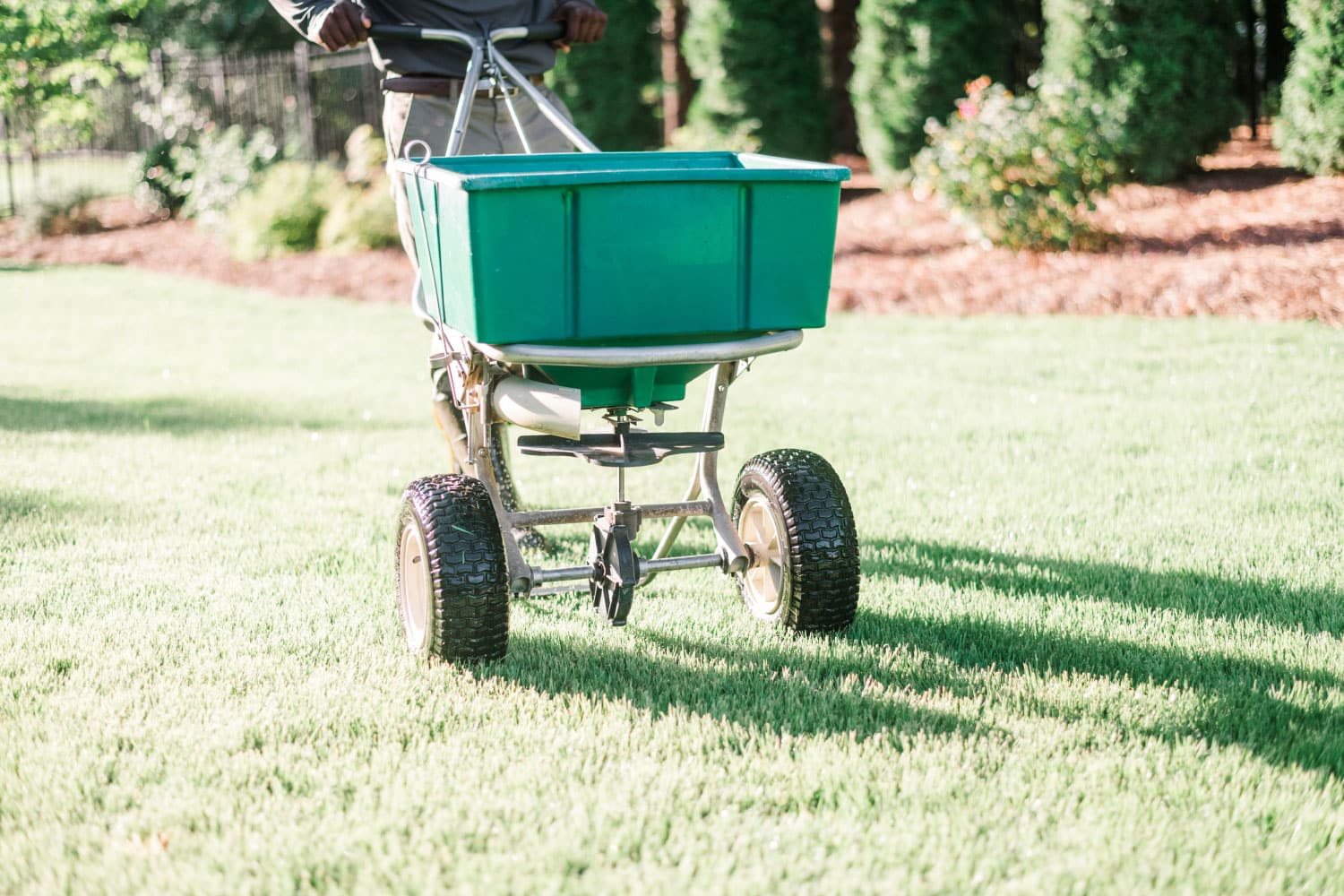If you live in or around Atlanta, your lawn probably needs limestone. The real questions are why, how much, and when? Limestone falls into our lawn maintenance program at Nature’s Turf as the 9th of 9 rounds in a year, meaning it’s generally cold when limestone application happens.
If you go out and look for it, limestone looks like simple dirt chunks compared to the vibrant fertilizers used during the growing season. What benefits could those dirt chunks possibly offer? Should you just skip it? Read on to learn more about limestone, why your lawn needs it, how much your lawn needs, and when limestone should be applied.
Why Does Your Lawn Need Limestone?
Soils in and around Atlanta are generally clay-based, and that means your lawn probably needs limestone. Georgia red clay is notoriously unloved by homeowners and gardeners, but there are advantages to this orange-tinted terra firma. Strategic amendments help to correct some of clay’s shortcomings, giving us better access to its strengths.
Regular applications of limestone are a simple and necessary amendment to unlock your clay soil’s full potential. Clay is naturally acidic. While our turfgrasses can survive fairly acidic soil conditions, they thrive in a pH range of 5.5 to 6.5. Clay soil that has never been cultivated or has lain fallow for a long period of time is often well below that range. This creates a situation where key nutrients become bound, and plant health is compromised. The question then becomes how much limestone do you need?
How Much Limestone Does My Lawn Need?
The only accurate way to determine the exact amount of limestone your soil needs is to test your soil. At Nature’s Turf we offer soil testing as a service to our customers. If you’re not a customer, you can submit your soil for testing at your nearest University of Georgia Extension office. Among the list of recommendations will be nutritional amendments and a suggestion for how much limestone should be applied for your yard to be in the optimal range.
Corrective limestone applications are larger rates meant to augment the pH of your soil by many tenths. If soil test results suggest corrective applications of limestone, we are happy to discuss application strategy and cost.
At Nature’s Turf, we include maintenance applications of limestone in our main programs. These are smaller rates than a corrective application and are meant to offset the pH decrease associated with fertilization in a typical lawn program. If small applications of limestone are avoided over extended periods of time, corrective applications will eventually be required.
When Should I Apply Limestone?
Timing limestone applications is easy since there isn’t really a bad time to do them. Limestone doesn’t pose risks of injury, nor does it reduce the effects of fertilizer or weed control. In fact, it helps the rest of our treatments work better. Healthy turfgrass works in combination with weed control treatments to resist weed formation. Healthy, actively-growing weeds are also more susceptible to weed control.
Our typical limestone applications are strategically timed based on the following criteria:
- Limestone isn’t necessarily an immediate process. It must dissolve and percolate into the pore spaces where its work is done. Applying limestone in November or December gives it time to do its finest work before fertilizer applications reconvene.
- Applying limestone in late fall/winter strategically fits with our weed control and fertilization rounds. Timing of those rounds is far more critical than the timing of limestone.
- Many of our rounds are liquid and carried on water. Applying limestone in winter, which is a dry/spread application, limits the effect freezing weather has on our scheduling. This enables us to stay on top of other functions, such as winter weed control, as well.
Important Takeaways:
- Soils in and around Atlanta are generally clay-based, and that means your lawn probably needs limestone. Clay soils are naturally acidic and often require amendments to be optimized.
- Soil testing is the only accurate way to determine the exact amount of limestone your soil needs. Corrective applications are available if soil testing shows you need one.
- Our main turf programs include a scheduled maintenance application of limestone meant to offset the expected pH drop from the fertilizers in our program.
- Timing limestone applications is easy since there isn’t really a bad time to do them. We schedule ours in a way that allows us to provide your turf with fertilizer and weed control when those applications are most effective.
- Reach out to us at Nature’s Turf via email or by phone at (770) 637-7515 with questions about limestone and how to achieve a healthy, beautiful lawn.








